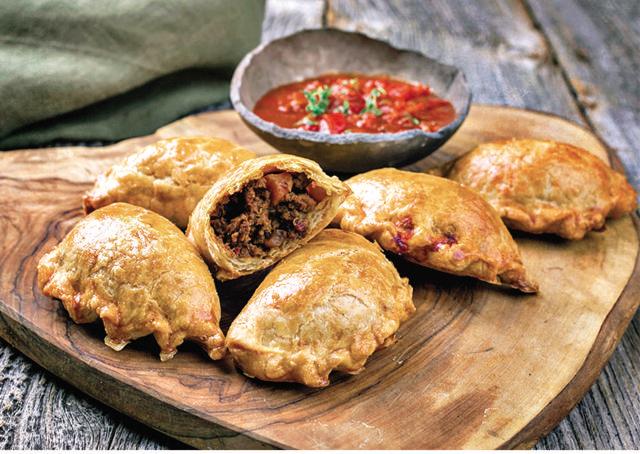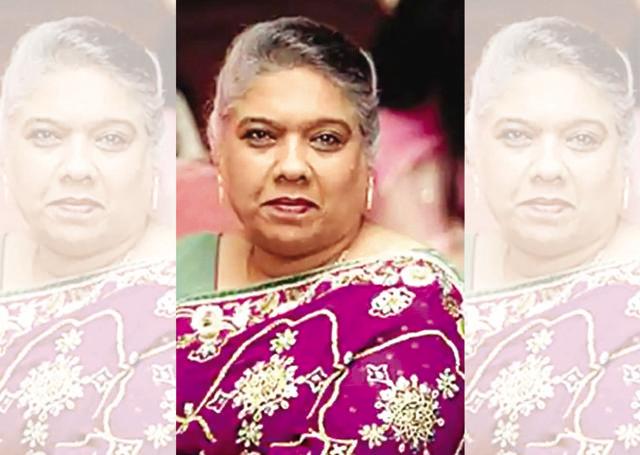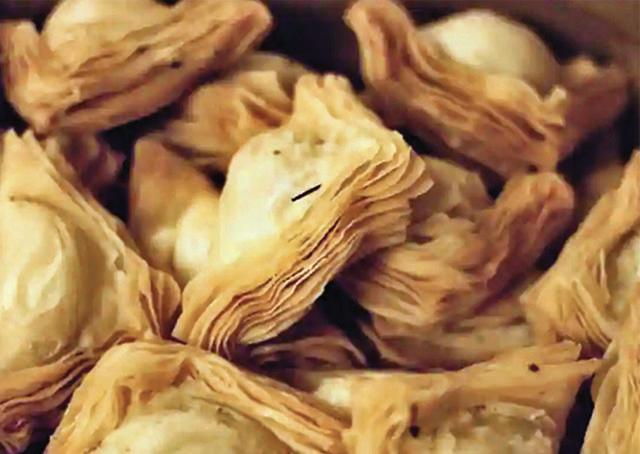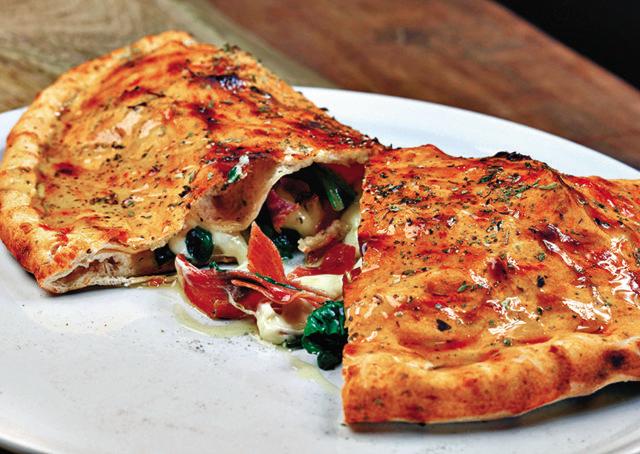I wrote, three years ago, about ordering delicious flakey keema samosas in Bengaluru from Anisa’s Kitchen, a catering service run by the eponymous Anisa. I was introduced to Anisa and her delicious food by my friend, Ash Lilani, who has the good fortune to know Rezwan Razack (of the Prestige group), one of Bengaluru’s great gourmets.
Rezwan often used Anisa’s catering service and he sent me the first batch of keema samosas. After that I ordered them each time I was in Bengaluru and took them everywhere with me. (Mumbai, Delhi, even the beach on an island in the Maldives!) Last week, Ash texted me the sad news. Anisa had passed away.
I thought back to the first time I had tried the samosas. When I wrote about them, I had to persuade skeptical North Indians that there were Gujarati samosas. “Gujaratis eat samosas?” was the most common response. “We had no idea.”
I had to explain to them that not only did Gujaratis make some of the best samosas in India, we also made exceptional biryanis. This led to more eye-rolling and expressions of surprise. “But Gujaratis are vegetarians,” I was told.

Well yes, most of us are. But some Gujarati Kshatriyas (the old royal families, for instance) do eat meat. And so do many of our minorities. Gujarat contains some of South Asia’s finest trading communities. Apart from the vanyas, there are also great Muslim trading communities such as the Bohras, the Khojas and the Memons.
Anisa’s samosas were Memon samosas. (So was her biryani, but that is another story.) I doubt if they had a great deal to do with Punjabi samosas. I suspect that the Bohra/Khoja /Memon samosas evolved independently of the North Indian samosa. All they had in common was that they probably originated from the same source: the Middle East.
Saying this leads, usually, to more huffing and puffing and such expressions of outrage as: “You mean the samosa is not an Indian dish?”
The answer to that is yes, the samosas we eat (and there is more than one kind) are certainly Indian. But they did not originate in India. There is no shame in admitting that. The calzone of Italy, the coca of Spain (or Catalonia to be more precise) and even the empanada of Central America, all come from the same source. There are even versions of the empanada in Indonesia, Malaysia and the Philippines that have the same origins.

The ancestor of all these dishes is a Middle-Eastern dish called the sanbusak. The world sanbusak is derived from the Persian ‘sanbusa’ meaning anything triangular. The dish first turns up in an Iraqi text in the early 9th century. It turns up again in a 12th century recipe book and by the 13th century, it is already being described as the triangular fried pastry you find in the Middle East today.
During the middle ages, the Arabs were the world’s great traders, scholars, warriors and travellers and they took versions of the sanbusak East and West. In Spain (in Valencia, the region to which the Arabs also introduced rice), the sanbusak became the empanada. (The Spanish took the empanada to Central America.) In Majorca and other parts of Spain, it was called a coca. In Italy, it became a calzone.
In each region, stuffings took on a local character. In Valencia, empanadas can be stuffed with tuna and tomato. In Bari, in the South of Italy, the stuffing could be mackerel. In Apulia, the calzone was stuffed with ricotta.
Over time, the shapes changed too. In large parts of Europe, they abandoned the triangular shape and went for a semi-circle. In Italy, the Naples version of the calzone can look like a folded pizza, which is why some people think it is no more than a kind of pizza. (In fact, the two dishes have distinct origins.)
So, who brought the sanbusak to India and when did it become our own favourite snack?
There is no agreement on this, because too much of our history is North India-based. In our retelling, everything is brought by invaders who arrive in Delhi and set up courts. Their food then travels around the country.
This version of history (following a tradition created by British historians) forgets that Indian contacts with the rest of the world occurred at many different parts of the peninsula, and often they had to do with trade, not with armies and royal courts.
There is no earthly reason for the Gujarati-Muslims of India’s west coast to make so many delicious samosas of their own (the Bohra samosa is even more famous than the Memon samosa), if the samosa only travelled across India, dispatched from Delhi.

As many of these communities were converted in the medieval era, it is more probable that their food habits were influenced by the Arabs who converted them. I would go so far as to argue that the Gujarati samosa has nothing to do with the Delhi chaat-wallah samosa. Both versions came from the Middle East, but they came separately and developed completely differently thousands of miles apart in different parts of India.
All over the Middle East, there are two versions of the sanbusak. One version is deep-fried and another is baked. This is true of calzone as well. As calzone has travelled around the world and turned up on pizzeria menus, it has become a pastry baked in a pizza oven. But in Italy, it is often deep-fried.
Did the Arabs bring us the deep fried version?
Or did the baked sanbusak transform into a deep-fried samosa that could be made easily at every little dhaba without having to worry about access to an oven? Was it a mixture of both? Frankly, I don’t know and I have never read a convincing historical explanation.
But what is clear is that even within our deep fried samosas, there are two crucial variations. The first is the shape. Though the Persian origin of the name means triangular, as we have seen, the shape shifted on its travels. Anisa’s samosa could be rectangular in shape and Bohra samosas, while triangular, are usually much smaller than their burly Punjabi counterparts.
The other primary difference – and this one is crucial – is the dough. The North Indian samosa has a one-dimensional, sturdy covering that holds the filling in place. Gujarati samosas on the other hand, have a thin (often flakey) covering, which gets delicately crisp when you fry them. Most Gujarati Muslim households that I know use store-bought pati (or wrapping) to make the samosas and the results are nearly always outstanding.

I don’t know where Anisa got hers from but what made her Memon samosas so delicious was the flakiness of her pastry. It was not the kind of flakiness you associate with deep frying and it had more in common with baked pastry.
The flakiest croissants I have had in Delhi are made by Sahil Mehta and he gets the flakiness, he says, by folding his dough again and again (probably twice as much as anyone else does), so that each layer of buttered pastry rises in the oven giving a flakey crispiness.
But does this work when the samosa is deep-fried? I asked Rohit Sangwan of the Taj Lands End, whose encyclopedic knowledge of the science of baking always leaves me in awe. Rohit says that too many cooks start by making the dough with water rather than a fat. Start with fat, he says, and you will get a light flakiness that will survive deep-frying in a kadai. In the bad old days, says Rohit, chefs knew that margarine or lard would give a flakier pastry but now health concerns have led them to abandon that practice. (He is right but I suspect, many French chefs still use animal fat for flakiness.)
So, which is the better samosa?
Frankly, I think it is a no-contest. The Western Indian samosa is far more delicate and delicious than the North Indian stodgy samosa. Kainaz Contractor of Delhi’s Rustom’s restaurant makes some of the city’s most delicious samosas but makes it a point to order the Bohra pati from Mumbai to get the right flakiness and crispness for the outside of her Parsi samosas.
But, of course, there is a strong case to be made for the North Indian samosa as a chaat staple and a tea-time snack. Put it next to say, a calzone or an empanada and it is not so different. Both of those dishes can have an equally stodgy crust.
In the end, I guess it comes down to what you like. I am a pastry guy. I love flakey patties and buttery croissants, where the flakes settle on your shirt as you eat.
If on the other hand, you like your samosas strong and podgy, and served with a chaat chutney, then the Punjabi version is the best.
But never forget that whichever version you choose you are eating the descendant of a thousand-year-old dish that has travelled the world.
From HT Brunch, August 2, 2020


